A very interesting book about the group of scientists who fundamentally changed anti-submarine warfare and did a great, great deal towards winning the war. Roughly 40,000 men went to war on German U-boats in WWII and 30-31,000 were casualties; nearly half of these were from aircraft. While the bulk of their work was done on behalf of Coastal Command (aircraft), there are some sidebars in the book about their work with ship-based ASW.
One astonishing development was the change made by the physicist EJ Williams in depth charge attacks by aircraft. His simple (we would view them as such today) calculations increased the loss rate of U-boats by aircraft from 1-2% per sighted U-boat to 10-20% per sighting.
The book also dealt with operational research in the Battle of Britain, how scientists worked to coordinate the Chain Home radar data with Fighter Command and AAA batteries.
One interesting note is that almost all of these men were committed Socialists or even card-carrying Communists.
"Math geeks" like @Totentanz may be disappointed by the lack of math (I think only 1 or 2 formulas were used in the book), but for the rest of us that's a good thing. The book is easily understood by us non-math types. If you're a historian or manager you should probably read the book to see how punch cards and statistics altered the course of WWII.
One astonishing development was the change made by the physicist EJ Williams in depth charge attacks by aircraft. His simple (we would view them as such today) calculations increased the loss rate of U-boats by aircraft from 1-2% per sighted U-boat to 10-20% per sighting.
The book also dealt with operational research in the Battle of Britain, how scientists worked to coordinate the Chain Home radar data with Fighter Command and AAA batteries.
One interesting note is that almost all of these men were committed Socialists or even card-carrying Communists.
"Math geeks" like @Totentanz may be disappointed by the lack of math (I think only 1 or 2 formulas were used in the book), but for the rest of us that's a good thing. The book is easily understood by us non-math types. If you're a historian or manager you should probably read the book to see how punch cards and statistics altered the course of WWII.
